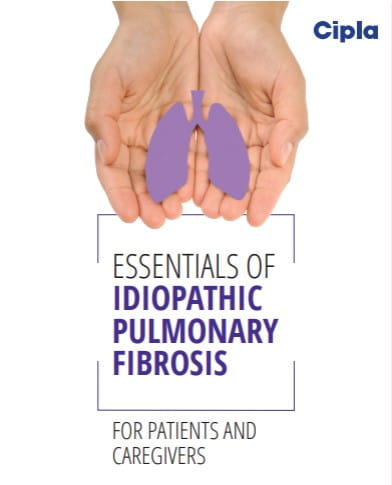Speaker: Yet Hong Khor
The use of patient-reported outcomes (PROMs) as endpoints in idiopathic pulmonary fibrosis (IPF) clinical trials is crucial for assessing patient-centered efficacy. PROMs measure how participants feel, function, and survive, focusing on self-reported health status. Unlike traditional measures like Forced Vital Capacity (FVC), which assess lung function, PROMs capture patient perceptions without clinician or researcher bias, evaluating quality of life and symptoms such as dyspnea, cough, and fatigue. Key considerations when selecting PROMs include psychometric properties—validity, reliability, responsiveness, and interpretability. Validity ensures the PROM measures what it intends to, while reliability guarantees consistent results. Responsiveness reflects the tool's ability to detect intervention-driven changes, and interpretability involves assigning clinical significance, often through minimal clinically important differences (MCID). Additionally, PROMs should minimize patient burden by being simple, quick, and easy to complete, especially with repeated assessments. PROMs specific to IPF or interstitial lung diseases (ILD) are preferred for detecting clinically relevant changes, making them ideal for trial endpoints.
PROMs in IPF trials typically assess health-related quality of life (HRQoL) and are either generic or disease-specific. Generic PROMs, like the Short Form-36 (SF-36) and EQ-5D, are applicable across various diseases, making them valuable for cost-effectiveness assessments and comparing IPF's burden to other conditions like cardiovascular disease. Though not specific to IPF, these tools are validated for detecting clinical changes in this population. Using PROMs in IPF trials offers a patient-centric approach to evaluating therapeutic efficacy. Disease-specific PROMs for IPF have evolved, with early tools adapted from chronic obstructive pulmonary disease (COPD) assessments, such as the St. George's Respiratory Questionnaire (SGRQ), which was later modified for interstitial lung diseases (ILD). More recently, IPF-specific tools like the King’s Brief Interstitial Lung Disease (K-BILD) and Living with IPF questionnaires have emerged. These tools measure both the physical and psychosocial effects of the disease, with lengths varying from 15 to 44 items and recall periods ranging from 24 hours to four weeks. The choice of PROM depends on trial duration and intervention, with a preference for IPF-specific tools when possible.
Dyspnea, a common symptom in IPF, is often assessed using tools like the University of California, San Diego (UCSD) Shortness of Breath Questionnaire and the Modified Medical Research Council (MMRC) Dyspnoea Scale, both originally developed for airway diseases like COPD. While widely used, these tools focus on physical limitations and do not capture the multidimensional nature of dyspnea, which includes sensory perceptions (e.g., air hunger, chest tightness) and emotional distress. Newer tools like the Dyspnoea-12 and the Multidimensional Dyspnoea Profile (MDP) offer a more comprehensive assessment and are preferable when dyspnea is a key outcome in trials.
Cough, another significant IPF symptom, has gained attention recently, though none of the available questionnaires were specifically designed for IPF. Tools like the Leicester Cough Questionnaire (LCQ) and the Cough Severity Test are commonly used, though their MCID values were established in non-IPF populations, limiting their applicability in IPF. These tools require further validation to establish their relevance and psychometric properties in IPF patients. Incorporating PROMs in IPF trials is essential for understanding patient well-being, the core goal of therapeutic interventions. Whenever possible, IPF-specific PROMs should be prioritized, with adherence to regulatory guidelines such as those from the Food and Drug Administration (FDA). Pre-specifying statistical analyses using PROMs data is also necessary to ensure trial outcomes are robust.
In clinical trials, evaluating baseline symptom severity and its relative change requires a nuanced approach. A responder analysis is crucial, identifying subgroups of patients who achieve clinically meaningful improvements based on a pre-specified MCID, even if significant changes are not observed across the entire cohort. The inclusion of PROMs in IPF trials facilitates the validation of these instruments, many of which were initially developed for other diseases and lack full validation in IPF populations. Comparing PROM results with objective endpoints such as lung function tests, six-minute walk test data, and cough monitors strengthens their validity. Employing both multi-component and simpler PROMs allows for direct comparisons, assessing whether more complex measures provide greater insights. Longitudinal evaluations, particularly during open-label trial phases, enhance the assessment of PROM predictive validity and sensitivity to change over time. Furthermore, advanced data collection methods, including automated reminders, can improve data completeness and usability, especially in multi-center, international trials where cultural and linguistic differences may influence PROM adaptation.
In summary, PROMs are essential tools in IPF trials, not only as endpoints but also for validating psychometric properties, comparing different PROMs, and assessing their practical usability in diverse populations.
European Respiratory Society Congress 2024, 7–11 September, Vienna, Austria




